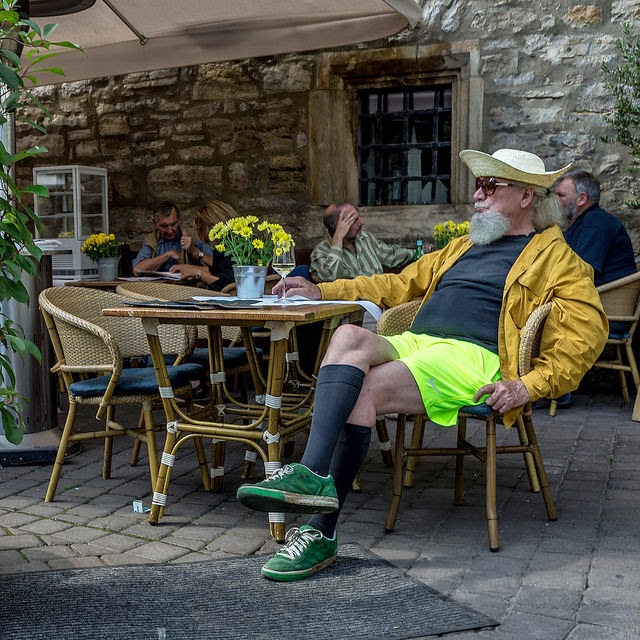I’m reading “Story,” by Robert McKee and kicking myself for not doing this long ago. I’ve reached the part where McKee talks about the difference between character and characterization and says some eye-poppingly interesting things. Useful things.
If you haven’t read “Story,” get your hands on a copy. If you don’t want to shell out 40 dollars for a hardcover, take the book out from the library. You may end up disagreeing with what McKee says--and that’s fine, different strokes and all that--but it can help you grasp the essence of what makes a story absorbing: character and structure working together.
What Is Character? Characterization vs Character
McKee writes:
“Characterization is the sum of all observable qualities of a human being, everything knowable through careful scrutiny: age and IQ; sex and sexuality; style of speech and gesture; choices of home, car, and dress; education and occupation; personality and nervosity; values and attitudes–all aspects of humanity we could know by taking notes on someone day in and day out. [...] This singular assemblage of traits is characterization ... but it is not character.”
McKee goes on:
“TRUE CHARACTER is revealed in the choices a human being makes under pressure–the greater the pressure, the deeper the revelation, the truer the choice to the character’s essential nature.”
True character has to do with whether someone is loving or cruel, generous or selfish, strong or weak, and so on. In life as in art “The only way to know” whether someone is generous or selfish, kind or cruel, and so on, is to “witness him make choices under pressure [...]. As he chooses, he is.”
Yes!! That. What he said. I’ve felt this myself but hadn’t put it into words. Of course Dwight V. Swain, Jack Bickham and Jim Butcher have said much the same thing but for some reason when I read McKee’s “Story” the light went on.
McKee goes on:
“Pressure is essential. Choices made when nothing is at risk mean little.”
Exactly! And these choices are made in sequels.
The importance of structure–and the reason why structure and character are two sides of the same coin–is that character can only be revealed over time through the choices a character makes. It is the unfolding of these choices we call structure.
For example ...
Character Arc
1. Beginning of story: Characterization
At the beginning of a story, in the setup, characters are described; characterized. Readers are told what the character’s gender is, approximately how old they are, and so on.
2. First choice: The Character’s deep nature is revealed through their choices.
I re-watched The Matrix yesterday. At the beginning of the movie Thomas Anderson (aka Neo) makes a number of choices.
- He chooses to follow the white rabbit to a nightclub even though he knows he has to work the next day.
- At work, he has a choice whether to trust Morpheus and do something dangerous or play it safe.
- At the end of Act One he has to choose whether to take the blue pill and forget all about The Matrix or take the red pill and learn the truth, even though learning the truth will cost him everything.
Notice how these choices build on each other, becoming more difficult (the stakes increase) and, correspondingly, more revealing of Thomas Anderson’s deep nature.
3. Conflict between characterization and deep nature.
Here the writer shows that the character’s deep nature is at odds with his characterization.
McKee calls James Bond a lounge lizard. Bond wears expensive clothes and lurks around nice hotel lobbies chatting up and bedding beautiful, rich women. That’s all part of his characterization. But his character is quite different. The average lounge lizard wouldn’t risk his life to defend his country--he wouldn’t know where to begin.
McKee writes:
“[The character’s] deep nature is at odds with the outer countenance of the character, contrasting with it, if not contradicting it. We sense that he is not what he appears to be.”
4. The character’s choices become more difficult.
After a character’s inner nature, their deep nature, has been exposed they must be driven to make even more difficult choices.
5. End of story: The character--who they are at the deepest level--has been profoundly and permanently changed.
By the end of the story the character’s choices have “profoundly changed the humanity of the character.”
McKee sums it up like this:
“Whether our instincts work through character or structure, they ultimately meet at the same place.
“For this reason the phrase ‘character-driven story’ is redundant. All stories are ‘character-driven.’ Event design and character design mirror each other. Character cannot be expressed in depth except through the design of story.”
That’s it for today!


I also think a part of having characters make choices under pressure is important because it shows a different side to them. The reader learns who they are by the differences of their reactions, how they react in a casual situation with their best friend versus when that friend is about to die. Which is to say, if we only see how they are under pressure, it's not as interesting as if we were to also witness how they act when, say, they're at a karaoke bar.
ReplyDeleteI'd say a lot of characters are limited by being stressed out all of the time, and we see a true character when we see all kinds of sides of that character.
Very true. It's a spectrum of behavior.
Delete